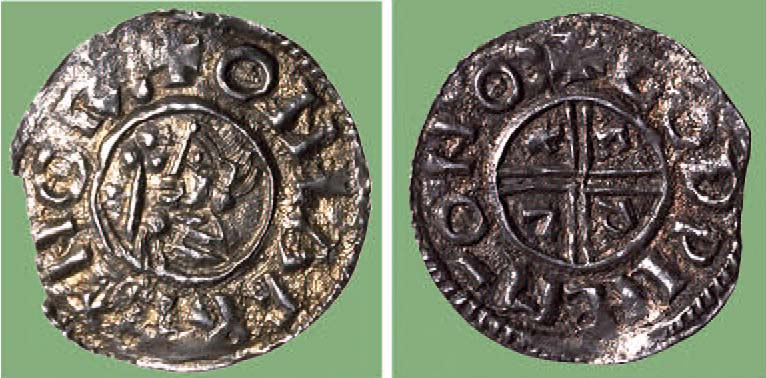Norwegian penning on:
[Wikipedia]
[Google]
[Amazon]
 The penning was the dominant currency of the Norwegian
The penning was the dominant currency of the Norwegian

 The penning was the dominant currency of the Norwegian
The penning was the dominant currency of the Norwegian coin
A coin is a small, flat (usually depending on the country or value), round piece of metal or plastic used primarily as a medium of exchange or legal tender. They are standardized in weight, and produced in large quantities at a mint in order ...
system in the period 995-1387.
Minted in Norway
Norway, officially the Kingdom of Norway, is a Nordic countries, Nordic country in Northern Europe, the mainland territory of which comprises the western and northernmost portion of the Scandinavian Peninsula. The remote Arctic island of ...
by the kings of Norway from Olaf Tryggvason
Olaf Tryggvason (960s – 9 September 1000) was King of Norway from 995 to 1000. He was the son of Tryggvi Olafsson, king of Viken ( Vingulmark, and Rånrike), and, according to later sagas, the great-grandson of Harald Fairhair, first King of N ...
(995-1000) and up to Olaf Haakonsson (1380-1387), it remained as a unit of account in the kingdom until 1513. It was introduced the year 995 in the image of the Anglo-Saxon
The Anglo-Saxons were a cultural group who inhabited England in the Early Middle Ages. They traced their origins to settlers who came to Britain from mainland Europe in the 5th century. However, the ethnogenesis of the Anglo-Saxons happened wit ...
coinage, and was the first and oldest currency of Norway. The coin system was later adapted in both Sweden
Sweden, formally the Kingdom of Sweden,The United Nations Group of Experts on Geographical Names states that the country's formal name is the Kingdom of SwedenUNGEGN World Geographical Names, Sweden./ref> is a Nordic countries, Nordic c ...
and Denmark
)
, song = ( en, "King Christian stood by the lofty mast")
, song_type = National and royal anthem
, image_map = EU-Denmark.svg
, map_caption =
, subdivision_type = Sovereign state
, subdivision_name = Kingdom of Denmark
, establish ...
.
The name lives on in the North Germanic languages
The North Germanic languages make up one of the three branches of the Germanic languages—a sub-family of the Indo-European languages—along with the West Germanic languages and the extinct East Germanic languages. The language group is also ...
in the contracted form of the plural, ''penger/pengar'', which means money.
In the old Norwegian weight system it entered into units as ertog, øre and mark
Mark may refer to:
Currency
* Bosnia and Herzegovina convertible mark, the currency of Bosnia and Herzegovina
* East German mark, the currency of the German Democratic Republic
* Estonian mark, the currency of Estonia between 1918 and 1927
* Finn ...
. Penning amended standard on several occasions through the Middle Ages
In the history of Europe, the Middle Ages or medieval period lasted approximately from the late 5th to the late 15th centuries, similar to the post-classical period of global history. It began with the fall of the Western Roman Empire ...
. Both coin image, inscriptions, size, weight, and the silver content could vary considerably.
The penning was minted
Minted is an online marketplace of premium design goods created by independent artists and designers. The company sources art and design from a community of more than 16,000 independent artists from around the world. Minted offers artists two bus ...
in imitation of the pennies
A penny is a coin ( pennies) or a unit of currency (pl. pence) in various countries. Borrowed from the Carolingian denarius (hence its former abbreviation d.), it is usually the smallest denomination within a currency system. Presently, it is t ...
, pfennig
The 'pfennig' (; . 'pfennigs' or ; symbol pf or ₰) or penny is a former German coin or note, which was the official currency from the 9th century until the introduction of the euro in 2002. While a valuable coin during the Middle Ages, ...
and deniers issued elsewhere in Europe. However, although based on these coins, the accounting system was distinct, with different systems operating in different regions. All used the öre which was worth 1/8 of a mark or 3 örtugs.
Value Relations between mark, øre, örtug og penning:
* 1 mark = 8 øre = 24 ertogs = 240 pennings
* 1 øre = 3 ertogs = 30 pennings
* 1 ertog = 10 pennings
* 1 penning
Historical timeline of Norwegian currency

See also
*Swedish penning The penning or penny was the Swedish variant of the Norwegian penning that was minted from about 1150 until 1548, and which remained as a unit of account in Sweden until 1777. Originally penning was first minted in Norway by the Norwegian king Ol ...
, its former Swedish interpretation
* penny
A penny is a coin ( pennies) or a unit of currency (pl. pence) in various countries. Borrowed from the Carolingian denarius (hence its former abbreviation d.), it is usually the smallest denomination within a currency system. Presently, it is t ...
, its British equivalent
* denier, its former French equivalent
* pfennig
The 'pfennig' (; . 'pfennigs' or ; symbol pf or ₰) or penny is a former German coin or note, which was the official currency from the 9th century until the introduction of the euro in 2002. While a valuable coin during the Middle Ages, ...
, its former German equivalent
References
Currencies of Europe Currencies of Norway {{Money-unit-stub